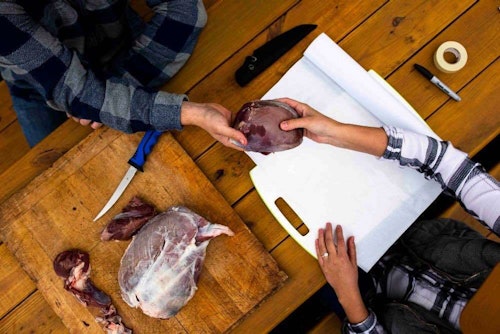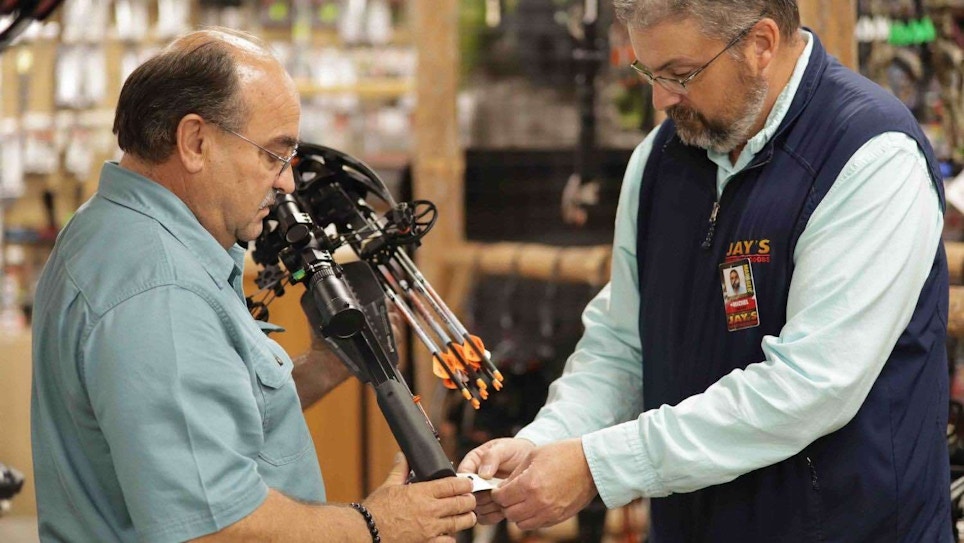As an archery pro shop owner or employee, you encounter all types of people, including newcomers and veterans alike. Although long-time archers and customers likely understand product names, hunting nuances and strategies mentioned in casual conversations, newcomers probably won’t have a clue. With this in mind, you should talk to them in a way that helps them understand archery and bowhunting without belittling or talking down to them
Research shows that what you say and how you say it matters. Individual words and phrases can affect how people perceive archery and bowhunting. Words invoke certain feelings based on cultural or historical associations, whether accurate or not. Some words can resonate with people, while others elicit disapproval or misunderstanding. And unfortunately, a lack of understanding or a negative reaction can have a lasting effect on a nonhunter’s opinion and perception of you, your business and the sport in general. Knowing the difference between words that resonate and words that don’t can help you better connect to newcomers, while convincing them to try archery and bowhunting.
Keywords and Phrases That Work
According to Frank Luntz’s book “Words That Work,” the following words may be particularly relevant to conversations about hunting. This list was also compiled using examples from the “How to Talk About Hunting” book by Mark Damian Duda and the NRA Hunters’ Leadership Forum.
- Legal, Regulated Hunting: Duda’s book compares studies using similar but different terms regarding how people hunt. In the first study, 61% of respondents expressed approval of “regulated hunting” compared with 79% who expressed approval of “legal hunting.” When the terms were combined into “legal, regulated hunting” in a third survey, 88% of respondents expressed approval for the activity. In other words, saying “legal, regulated hunting” is the best way to describe how hunters hunt because it lets nonhunters know that hunting is controlled and helps lead to healthy wildlife populations.
- Lifestyle: Hunting is an example of a lifestyle choice with social, biological, nutritional and economic benefits. Explaining what the “hunting lifestyle” looks like can help nonhunters understand how hunters view the sport.
- Independent: Luntz said this concept appeals to those who want to be self-sufficient and self-reliant since a hunter’s success requires individual strength and knowledge.
- Efficient: People tend to associate efficiency with the idea of getting more for less or wisely using resources. Hunting is associated with self-sufficiency, and in turn it’s an efficient use of resources because the venison from a single deer yields enough meat to sustain an individual or family for several months. It can also be gifted to friends or donated to charitable organizations, further increasing the activity’s efficiency.
- Investment: Purchasing a hunting license can be seen as an investment in the future of America’s natural resources, thanks to the funding it provides for essential conservation and wildlife management work. Therefore, the act of learning to hunt marks an important personal and social investment, which most people approve of.
- Organic, All-Natural and Free-Range: Research has found these words to be particularly effective when talking about the food-related benefits of hunting. People like the idea of obtaining meat that is organic, all-natural and free-range.
- Healthy: Many people strive to be healthy so when you use the word in relation to hunting, people tend to listen. Explain that hunting creates healthy habitats, wildlife, food and people.
- Children and Family: Connecting the idea of archery and bowhunting to kids and family members makes people see how inclusive and welcoming the activities can be for people of all ages. Therefore, they become more willing to support and participate.
- Humane: Nowadays consumers have ethical concerns about the origins of the meat they consume. Some despise the factory farming practices of the industrial meat market and desire a more humane alternative to meat production, which is great for bowhunting.
- Does Not Use Taxpayer Dollars: Many Americans have concerns about taxes and government spending in today’s world. Thankfully, few state wildlife agencies receive funding from general taxpayers. Instead, agencies rely primarily on two funding sources: hunting and fishing license fees; and federal excise taxes, which are paid on firearms, ammunition and archery gear through the Pittman-Robertson Act. Sharing this sentiment is often well received by the public and garners additional support for and acceptance of hunting.
If you need more points to highlight when trying to win over a newcomer, Duda said the three general messaging themes that work best in support of hunting are:
- Hunting as a food source.
- Hunting as conservation (hunting as a form of wildlife management that produces ecological benefits to both game and nongame species).
- Hunting as a right.

Words or Phrases to Use with Caution
- Game Animals: When talking about huntable wildlife, this term may turn people off because it appears to trivialize the animal. People may also assume that someone is referring to hunting animals as a game rather than as a serious activity, which can be problematic.
- Trophy Hunting: This phrase is misunderstood in the nonhunting community. Many people believe trophy hunters take only the antlers from the animals they kill and waste the meat. Although we know this isn’t true and wasting meat is illegal, nonhunters likely need this explained to them. If you use the term without providing context, you might deter potential participants.
- Brown Is Down/If It Flies, It Dies: These phrases might seem harmless to hunters who’ve heard them before, but a nonhunter could think it sounds ruthless and vengeful. Avoid terms and phrases that might give the wrong impression of a hunter’s intentions. Always show respect and appreciation for wildlife when talking to newcomers.
Remember to Consider Your Audience
A person’s age, race, gender or background can influence their attitude toward hunting. Family and cultural traditions also affect a person’s relationship with food and animals. Before you start a long-winded spiel about gear, archery, hunting or otherwise, gather intel from the customer you’re talking to. Understanding their feelings toward animals or hunting will help you better pitch or describe the activity in a way that resonates.
Always adjust your message and delivery depending on the person or your audience. For example, your description of hunting to a 5-year-old should be different from the message you share with a 50-year-old because children often struggle to grasp concepts about conservation, sustainability and factory farming
Being intentional and mindful of your language and approach when talking to newcomers in your store can help them better connect and relate to archery and bowhunting, which increases the chances that they will try — and get hooked on — shooting a bow and arrow.
Photos courtesy of Archery Trade Association






